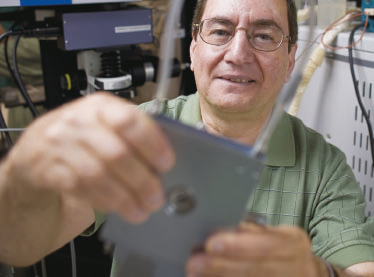Engineers have long known that most catalytic reactions occur at the nanoscale, where materials have a larger relative surface area and greater reactivity.
Now, new evidence shows that some metal-oxide catalysts achieve an additional and dramatic increase in reactivity at the extreme low end of the nanoscale, in dimensions measuring 1-2 nanometers or less.
Israel Wachs, professor of chemical engineering, made this discovery while anchoring nanoparticle catalysts of titania on a silica substrate. He developed a “multilevel substrate,” with the titania serving as a nanoscaffold able to anchor metal-oxide catalytically active sites and control their reactivity.
One of those catalysts, tungsten oxide, is a solid acid whose applications include increasing octane content in gasoline. Wachs was able to attach catalytically active sites of tungsten oxide to nanoparticles of titania ranging in size from 5 nm to less than 1 nm.
“Tungsten oxide’s behavior is a function of what it is attached to,” says Wachs. “If you’re seeking greater acidity in tungsten oxide, it is better for the tungsten oxide to be attached to titania than to silica, and it is better for it to be attached to smaller rather than to larger particles of titania.
“We achieved 100 times as much acidic reactivity with tungsten oxide attached to nanoparticles of titania measuring 1 nm or less, as we did with tungsten oxide attached to titania measuring roughly 5 nm.
“This is sub-nanoscale work.”

